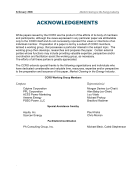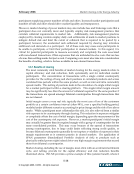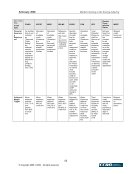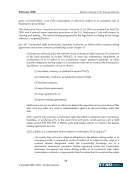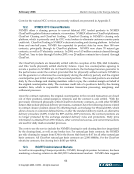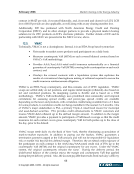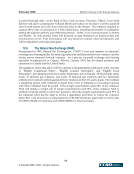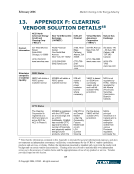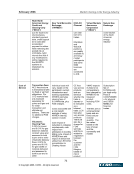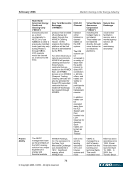February 2006 Market Clearing in the Energy Industry 5-31 © Copyright 2006, CCRO. All rights reserved. and other transaction costs. Financial engineering creates useful risk management products and inject capital into energy markets from investors who would otherwise lack access. Many trading organizations believe that inconsistent and uneconomic credit arrangements are limiting the value that their organizations can bring to the energy markets. But the nature of the issues differs substantially between the spot and day-ahead markets, and the forward markets. 5.4.1. Trading Obstacles When asked to name obstacles to fuller participation in the day-ahead and spot markets, trading organizations identified two impediments: • The misunderstanding of the true risk of their activities by ISO’s and other market participants • RTO/ISO credit and settlement policies and procedures As evidence of the misunderstanding of the true risk of their activities, trading organizations cited inconsistency in credit arrangements required of trading organizations. Trading organizations engaging in proprietary trading and market making in financially settled transactions in the day-ahead markets (a.k.a. Virtual Trading) must post collateral that is multiples of the collateral that generators and load serving entities must post when transacting in otherwise equivalent, physically settled trades. Trading organizations maintain that these inconsistencies exist even though they believe that the risk imposed on the market is exactly the same. Evidence cited by traders supporting the notion of inconsistent credit policies includes PJM’s separate credit policy for Virtual Trading that results in a two-time (2X) collateral multiplier, NE-ISO’s 2.6X multiplier, MISO’s 2X multiplier, and NYISO’s 2X multiplier. It is the position of some trading organizations that these large multipliers result from a concern about price spikes and the risk that such spikes could produce large credit exposures when bids are cleared. However, these trading organizations cite evidence of strong convergence of day-ahead markets and spot markets, aided in part by the liquidity and price discovery engendered by the trading organizations themselves. However, there may be another explanation for the unequal treatment of trading organizations and other market participants: the real or perceived inequality in their credit standing. Generators and load serving entities have real assets and real customers. Their balance sheets and income statements are, generally, solid and produce reliable cash flows. This increases their credit capacity and their credit standing. In many cases this robust credit capacity and credit standing is reflected in a good public credit rating and an ability to raise capital through debt financing. In contrast, many, but not all, trading organizations do not have either a stable or reliable source of cash flow. That said, an exacerbating factor in the disparity in credit requirements between trading organizations and other market participants may be due to a misunderstanding of the actual credit risk associated with the trading activity. If so, the solution is straightforward: collect the facts, do the analysis and refine the ISO credit policies. If
Purchased by unknown, nofirst nolast From: CCRO Library (library.ccro.org)


